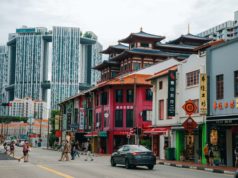“STATE FORMATION had begun among Muslims in Sulu by the middle of the fifteenth century. It may have even begun earlier in Luzon, for the tenthcentury Pila copperplate inscription suggests the presence of a lord whose power extended from Pulilan in Bulacan all the way to Tondo and down to Pila in Laguna. We should note, however, that the rode from chiefdom to state is not inevitable. The would-be king may lose his grip on his followers; his realm may thus fracture. Factors such as density of population, type of subsistence base (swidden or permanent cultivation?), and proximity to major trade routes affect the chances of would-be states. In the islands in coastal Visayas and Luzon chiefdoms seem to have been the norm when Legazpi entered the archipelago in 1565: ‘In all these islands, there are no kings or lords who ruled over them […] rather there were lord masters (principales)’ observed the administrator Antonio de Morga in 1609. This seems to hold true even for Tagalog settlements where Islam had penetrated. Soliman was the Muslim ruler of Manila. He sought to levy a tax in order to control the trade between Chinese traders in their ships and the inland towns. According to the anonymous author of 1570, as the Spaniards sailed into Manila Bay for the first time, ‘Moros’ rode out in boats to complain that Soliman had plundered their towns, while Chinese traders said he had taken away their boats’ helm and had seized the best of their goods without paying. This account is, of course, written by someone who seeks to justify Spanish rule. Still it is plausible that Soliman’s hold on subject communities was still shaky given what we know in general about settlements in Luzon of that period. On the other hand in the distant hinterlands of Luzon and Visayas, autonomous localities were most likely in place instead”. (Ibid.: 57-58).
[Angga ya keni itang katibayan a, anggiang kapilan, ali tamu mika “king” (rey), “queen” (reina), ampon “kingdom” (reino). Deng Kastila, ibat king ibat atin la. Ngeni, bustan yung ipakit ku kekayu nung nanu lang uring nilalang deng Spanish kings ampon Spanish queens.]
(Abatan ya ing kasuglung)




